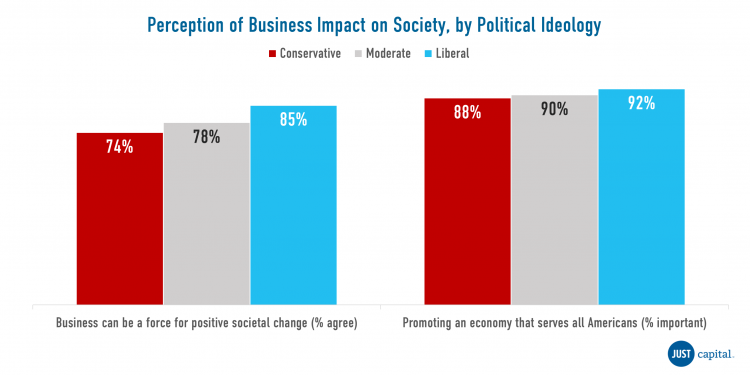4 Essential Steps for Building a Diverse and Inclusive Workplace
Two things are certain when it comes to diversity and inclusion: First, providing a diverse and inclusive workplace is a priority for the American public. And second, more companies than ever are in agreement.
This year, 59 of the companies we rank disclosed their diversity and inclusion policies for the first time — about 8% of the total number of companies that did so this year. Forty-five companies disclosed diversity and inclusion targets — goals for increasing or improving their workplace diversity — for the first time, or about 43% of all the companies that did so.
These upticks suggest a growing focus on practices, policies, and targets around diversity, equity, and inclusion — an essential measure of just business behavior. But there’s still room for improvement in building transparency around workforce diversity.
How can you help? Start by examining your own company’s approach to diversity and inclusion. No matter how much work you’ve done in this area in the past, it’s something that requires constant effort. Here are four crucial steps for building a diverse and inclusive workplace.
Step #1: Get a Baseline — and Make It Public
The first step in building a diverse workplace is getting a baseline reading on the demographic makeup of your company. Companies with more than 100 employees are already required to report these figures to the Equal Opportunity Commission.
At JUST Capital, we believe that companies should also share this information publicly, because transparency incentivizes managers to design more inclusive policies. According to our research, 40% of Russell 1000 companies disclose any diversity data and just 4% disclosed detailed data on gender and ethnicity by occupation.
Intel, which is no stranger to releasing granular information about its workforce demographics, recently broke new ground when it released its 2019 Diversity Report and, for the first time ever, published data on its employees’ wages.
Step #2: Develop Measurable Targets
Once you’ve collected and disclosed your workforce demographic data, the next step is to develop measurable diversity targets that capture how your company aims to address improvements and changes. Only 11% of the companies JUST Capital ranks disclose such targets.
Targets are controversial; some employers may claim they can’t find enough skilled workers for their workforce to reflect broader community demographics. They’re satisfied if, say, the proportion of Latinx employees in jobs requiring college degrees reflects the broader community’s proportion of Latinx college graduates.
But that’s not good enough: Employers should play a role in developing their own pipeline of diverse workers — and therefore meeting diversity targets — by supporting local education, offering training or apprenticeship programs, or helping with career development of both their own workers and members of their communities. Two such examples:
- Prudential Financial is committing more than $180 million through 2025 to help people ages 15 to 29 globally — a population often referred to as opportunity youth — gain the right skills to compete for and succeed in quality jobs.
- Accenture committed to hiring 5,000 U.S. veterans and military spouses by 2020. In addition, Accenture provides training and mentoring to support a transition from military to civilian work, including a unique two-month program to equip service members for careers in software engineering.
Want to read more stories like this?
Our FREE weekly newsletter about the future of capitalism and the movement to build a more equitable marketplace in America.
Step #3: Devise a Strategy to Meet Those Targets
The two examples above touch on this, but any company that wants to improve and maintain its diversity numbers must develop programs that help attract and retain workers from every desired group. These programs encompass recruitment (such as outreach), career development (such as training,tuition reimbursement, and educational assistance), and engagement efforts (such as Employee Resource Groups).
Semiconductor company NVIDIA promotes diversity and inclusion by shepherding candidates at key diversity recruiting events (such as Grace Hopper). At the board level, NVIDIA’s Nominating and Corporate Governance Committee reviews and strategizes around how to continue to improve diversity and inclusion.
Anthem is another company leading the way in diversity and inclusion. The health care provider’s strategy has involved partnering with an independent third party to confirm there was no pay gap for underrepresented minorities and women in its workforce.
Anthem also discloses its harassment policy in its code of conduct, explicitly forbidding sexual harassment. The company requires mandatory harassment and sexual harassment training and provides an open-door policy to allow employees to report any incident of alleged discrimination, discriminatory harassment, and sexual harassment.
All of these things — pay equity policy, development of grievance mechanisms, and harassment training — play a crucial role in developing a safe and inclusive workplace, which is why they’re reflected in how JUST measures whether a company provides equal opportunity.
Other things to consider:
- Educate your leaders. This usually means mandatory training for your organization’s executives and managers that covers the basics (what inclusion is and why it’s important), discusses strategies to foster inclusion in the company, makes people aware of unconscious bias, and drives home the importance of modeling inclusive behavior.
- Form an inclusion council. This is a group comprised of influential leaders who are one or two levels below the CEO and passionate about diversity and inclusion. The council acts as a conduit for communication between the rank and file and the C-suite, which includes advocating for inclusiveness in discussions with top executives when necessary, says Jennifer Brown, author of Inclusion: Diversity, the New Workplace & the Will to Change and president and CEO of Jennifer Brown Consulting. Ideally, councils should be involved in goal setting around hiring, retaining, and advancing a diverse workforce, and in addressing any employee engagement problems among underrepresented employee groups, Brown says.
Step #4: Regularly Measure Progress
Finally, a company’s diversity and inclusion strategy must be audited and evaluated on a periodic basis. That doesn’t just mean tracking metrics such as workforce demographics and retention of underrepresented groups. It also means examining whether the strategy is helping the company achieve related business goals, such as connecting with diverse customers or facilitating innovation through incorporating diverse perspectives.
Corporate leaders should bring other stakeholders along on this journey. As Intel’s Chief Diversity & Inclusion Officer told JUST Capital, disclosing progress publicly helps to hold employees and leaders accountable. It also sends a message to the company’s industry that bold action is required to tackle the diversity challenge.
Companies should also directly engage with stakeholders to measure how they perceive their diversity and inclusion efforts. Gather feedback through surveys, focus groups, advisory councils, or other techniques. At some level, your diversity and inclusion strategy is only as successful as your employees, communities, and customers perceive it to be.
Once you’ve collected feedback, it’s time to tweak your strategy as needed and start again. The business case linking diversity and performance is strong and getting stronger. So, for many reasons, it’s worth sustained effort to get it right.
To stay up to date on how America’s largest companies are performing on diversity and many more important issues, sign up for our free weekly newsletter, The JUST Report, today!






